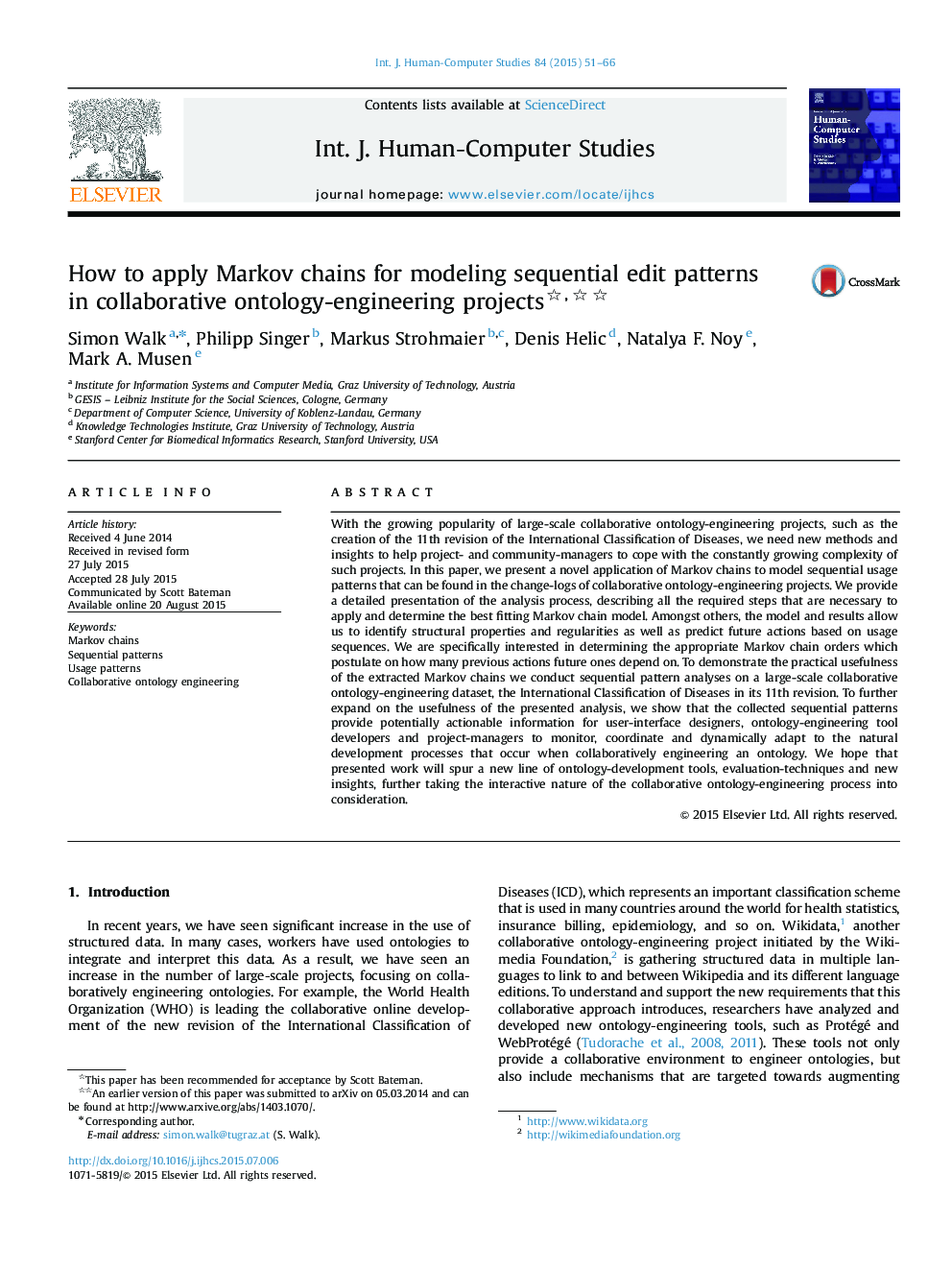| کد مقاله | کد نشریه | سال انتشار | مقاله انگلیسی | نسخه تمام متن |
|---|---|---|---|---|
| 400645 | 1438969 | 2015 | 16 صفحه PDF | دانلود رایگان |
• We provide a novel application for Markov.
• Using Markov chains we extract and analyze sequential usage patterns.
• We categorize the types of analyses that Markov chains enable us to perform.
• We demonstrate the utility of the Markov chain analysis on a large-scale project.
With the growing popularity of large-scale collaborative ontology-engineering projects, such as the creation of the 11th revision of the International Classification of Diseases, we need new methods and insights to help project- and community-managers to cope with the constantly growing complexity of such projects. In this paper, we present a novel application of Markov chains to model sequential usage patterns that can be found in the change-logs of collaborative ontology-engineering projects. We provide a detailed presentation of the analysis process, describing all the required steps that are necessary to apply and determine the best fitting Markov chain model. Amongst others, the model and results allow us to identify structural properties and regularities as well as predict future actions based on usage sequences. We are specifically interested in determining the appropriate Markov chain orders which postulate on how many previous actions future ones depend on. To demonstrate the practical usefulness of the extracted Markov chains we conduct sequential pattern analyses on a large-scale collaborative ontology-engineering dataset, the International Classification of Diseases in its 11th revision. To further expand on the usefulness of the presented analysis, we show that the collected sequential patterns provide potentially actionable information for user-interface designers, ontology-engineering tool developers and project-managers to monitor, coordinate and dynamically adapt to the natural development processes that occur when collaboratively engineering an ontology. We hope that presented work will spur a new line of ontology-development tools, evaluation-techniques and new insights, further taking the interactive nature of the collaborative ontology-engineering process into consideration.
Journal: International Journal of Human-Computer Studies - Volume 84, December 2015, Pages 51–66
